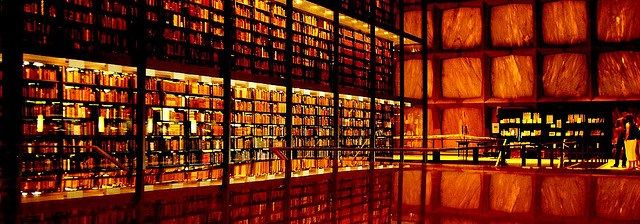In recent years, the function of the library has shifted from a repository of information to a designated workspace. Where once people conducted their research primarily by sitting down in a library and poring over books and microfilms, they now bring their work to libraries for the building and the environment and the quiet. We still utilize traditional resources from time to time, of course, but increasingly we value libraries for their updated café area or their cushy wood-paneled (and vault-ceilinged) rooms, or even just a nice table tucked away in a corner.
Part of the appeal of the library environment lies in its very identity. What makes us choose a library over the local coffee-shop, for instance? It still has a grave sort of dignity to it, however great or humble. When we say “resources†we don’t just mean the technology and the services it boasts, though those too are important. We mean the hundreds of thousands, the millions of files and tomes and volumes, organized, catalogued, searchable. Knowledge! Data! It’s not quite at one’s fingertips, but it’s all so very accessible, and, moreover, aggregated and collected. It’s an institution, an institution for the people.
Library stacks, though, are always something different. In a significantly large library, at a significantly late hour, you can be the only one in among the stacks. Shelves and shelves and row upon endless row of books, footsteps muffled and deadened by paper and oddslot fabric and webbed binding material. When was the last time someone touched this book? Opened it, read it? How old is it? Who wrote it, and were they well-received? Are they? What do they say? What are and were the lives of these books, their authors, their subjects? I don’t tend to enjoy studying in libraries, but sometimes I like to prowl Hatcher’s stacks, looking, brushing cracked spines, wondering if that one will fall open with a gentle puff of dust, like in films.
The space created by the presence of so many books exhales a sense of possibility. It’s a museum of art and history and science, but tangible, there for the purpose of letting you smell and handle and read it. It’s yours.



Leave a Reply
Be the First to Comment!